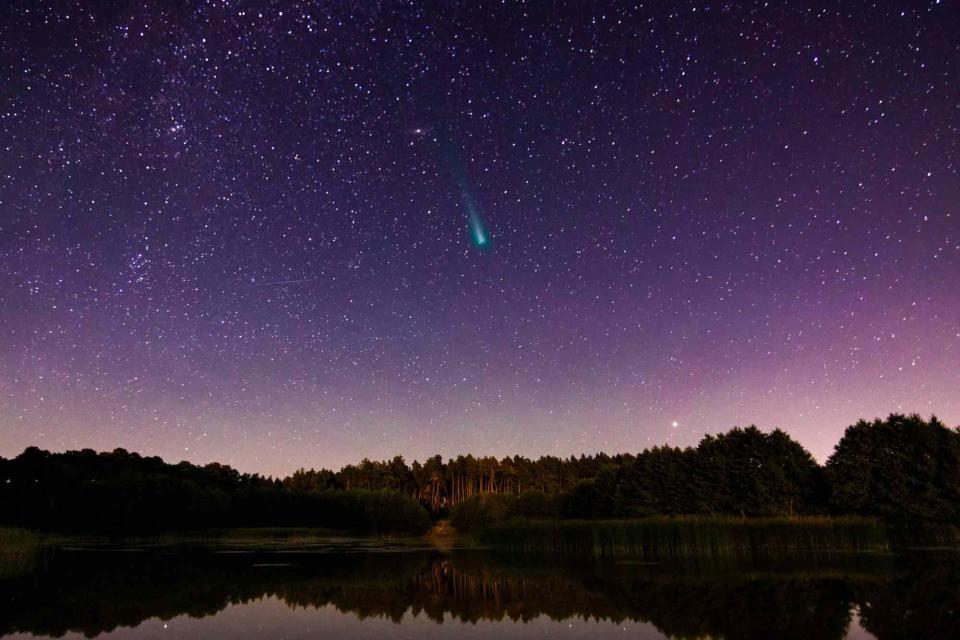A Once-in-a-Lifetime Comet Is Currently Visible From Earth—Here's the Best Way to See It
Comet 12P/Pons-Brooks orbits the sun every 71 years and won't be visible again until 2095.

A large, rare comet known for its colorful outbursts is currently visible from Earth. The comet 12P/Pons-Brooks orbits the sun every 71 years, and has been classified as a non-hazardous "Near Earth Asteroid" due to its orbit's proximity to Earth. Eager stargazers can witness this once-in-a-lifetime sighting through binoculars or a telescope.
According to NASA, comets are large objects made of dust and ice that orbit the sun. Unlike other comets, 12P/Pons-Brooks periodically lets out blasts of gas in gold conditions, which can cause it to glow green and red. Most recently, the rare comet has had flare-ups on October 5, November 1 and 14, December 14, and January 18, according to Space.com.
Though the comet has already been making its way through our solar system, it won't arrive at perihelion—the point in its orbit when it's closest to the sun—until April 21. This means it coincides with next month's total solar eclipse, which occurs on April 8. While a colorful flare-up is unlikely, it may still be possible to spot the comet in tandem with the eclipse.
If you don't want to wait until the eclipse, you will have other opportunities to view the comet throughout March and April. Right now, stargazers may be able to spot the comet by looking toward the constellation Pisces in the early evening. For the best chance at viewing 12P/Pons-Brooks, you will need to look through binoculars or a telescope.
Read the original article on Martha Stewart.

